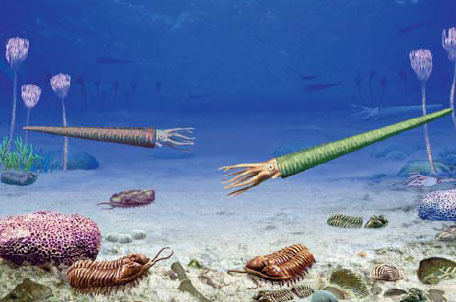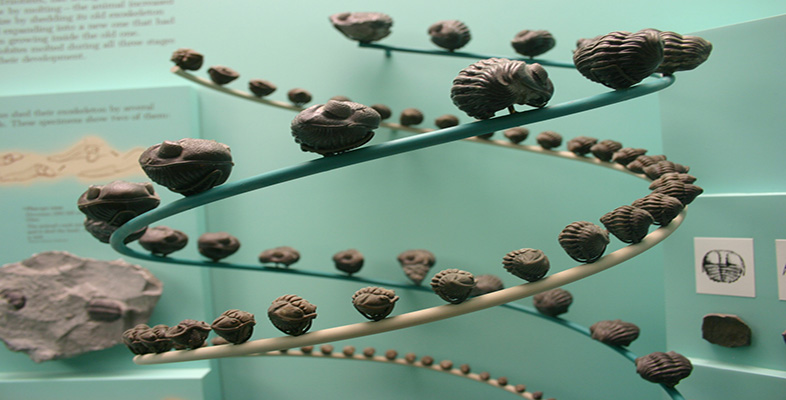4.4 Other Wenlock Limestone fossils
Among the other fossils common in the Wenlock Limestone are brachiopods (Figure 12a and b), gastropods (Figure 12c) and bryozoans (Figure 12d). You may need to reread Section 1.3 to remind yourself about various aspects of these groups.
Figure 13 (the course image) is a reconstruction of a typical scene from a Wenlock Limestone environment. See if you can identify trilobites (alive, dead, or moulted pieces of exoskeleton), corals (colonies and isolated individuals), and crinoids among the various forms of life depicted. The cone-shaped squid-like animals are straight nautiloids (cephalopod molluscs, Section 1.3).


